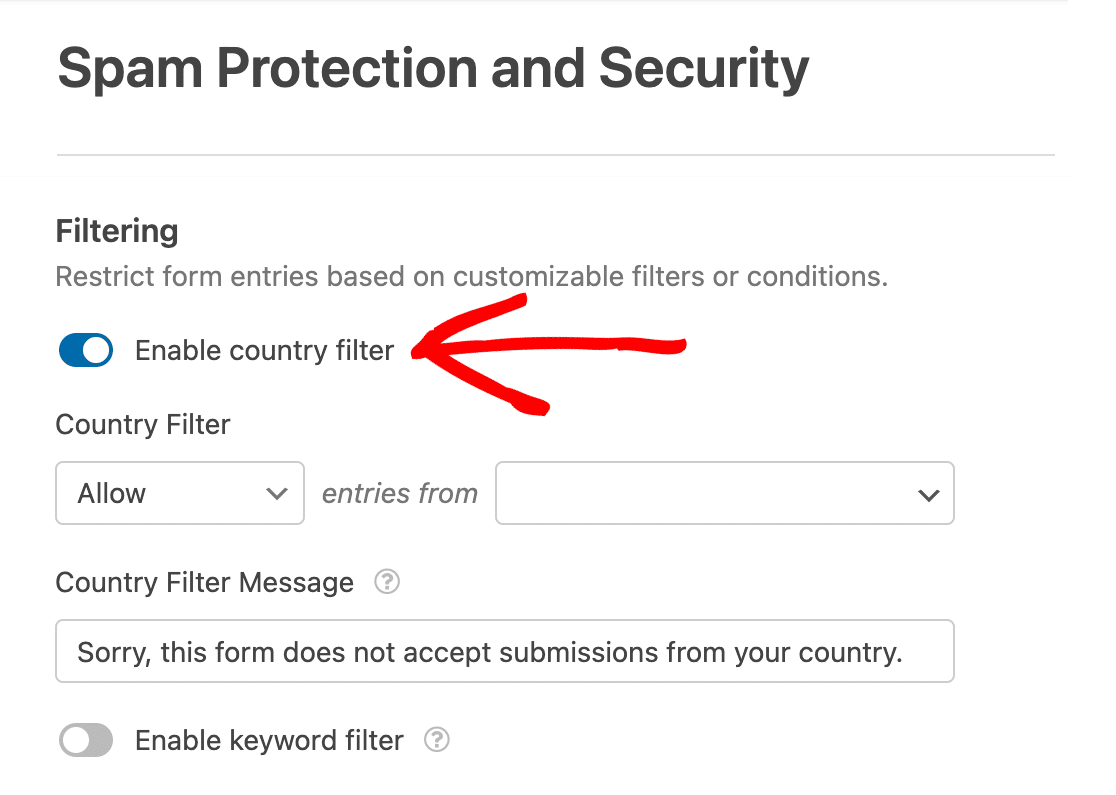Is your reCAPTCHA not working on your WordPress site?
reCAPTCHA is a free service offered by Google that helps protect websites from spam, and many WordPress users enjoy utilizing it. reCAPTCHA is a useful feature to have on your website, especially when inviting communication through the use of forms.
So, it can be pretty frustrating when reCAPTCHA isn’t working on your site.
There are a handful of common reasons why you might be having trouble with reCAPTCHA on your WordPress website, and we can help you fix them.
Add reCAPTCHA to Your WordPress Form Now
Why Is My reCAPTCHA Not Working in WordPress?
Usually, issues with reCAPTCHA arise due to how it’s configured in your website’s settings.
Plugin options, theme features, and other site settings all have a hand in how reCAPTCHA operates on your WordPress site. Your WPForms plugin settings, for example, can affect how this protection is applied to the forms submitted on your site. Luckily, reCAPTCHA issues can be solved with a bit of investigating into these settings.
In this post, we’ll cover the common problems you might run into with reCAPTCHA, and how to solve them. Plus, as a bonus, we’ll offer a few alternative methods for protecting your site, so you don’t have to utilize reCAPTCHA at all.
How to Fix reCAPTCHA Not Working in WordPress
1. Can’t Enable reCAPTCHA
When dragging and dropping fields to the form you’re building in WPForms, you may find that you can’t add or enable the reCAPTCHA field.
This problem is usually due to issues with the reCAPTCHA keys in your form builder’s settings, which is where you’ll go first to troubleshoot this problem.
From your WPForms settings, you need to make sure that your reCAPTCHA keys have been entered correctly.
Without the right reCAPTCHA keys in your settings, the reCAPTCHA field will still be visible in the available fields on the form builder, but you’ll get a warning message if you try to use it.

So, head over to WPForms » Settings » CAPTCHA to check if your reCAPTCHA keys have been correctly added to the reCAPTCHA key fields.
You might discover here that you don’t have the reCAPTCHA keys yet at all. So, you’ll need to generate these keys from Google.
As you can see, we offer a step by step tutorial for this process, which you can get to from the message that appears on the form builder.
Once you have your keys generated, you can apply the reCAPTCHA keys to your form builder’s settings.
Navigate to WPForms » Settings » CAPTCHA to enter your reCAPTCHA keys.

Then, go back to the form builder to add the reCAPTCHA field and enable reCAPTCHA on your form.
Once your reCAPTCHA keys are added and enabled in your WPForms settings, you should be able to add the reCAPTCHA field to your form with no problem.
2. Invalid Site Key
Another reason that your reCAPTCHA isn’t working in WordPress might be due to an invalid site key.
You’ll know this is the case if you receive a message that reads, “ERROR for site owner: Invalid site key” in the reCAPTCHA field when you try to add it on your form.
This means that, as the error message suggests, the reCAPTCHA keys added to WPForms » Settings » CAPTCHA are invalid. Perhaps the keys were incorrectly copied to your WPForms settings, or they were accidentally deleted from your Google reCAPTCHA account.
So, you’ll need to double check the reCAPTCHA keys you have from Google, and make sure that they match the keys you’ve applied to your WPForms settings.

To fix your invalid site key, you may just need to re-generate the Google reCAPTCHA keys on the Google site.
If you re-generate your reCAPTCHA keys in Google, be sure to add the new keys in your WPForms settings. Go back to WPForms » Settings » CAPTCHA to add and enable your re-generated keys.
3. Google reCAPTCHA Verification Failed
Failure to verify reCAPTCHA is another common problem you may encounter with WordPress, and there are a number of possible reasons this might occur.

If this happens, you’ll receive a message that reads, “Google reCAPTCHA verification failed, please try again later.” This error message will appear after the reCAPTCHA field, following a form submission
To troubleshoot this problem, check to see if it has to do with incorrect reCAPTCHA keys by repeating the steps described in issue #2 above.
Your site keys may be wrong, or they might be configured incorrectly in your Google reCAPTCHA account. If so, you should simply generate a new set of reCAPTCHA keys.
If the form still can’t be submitted successfully with your site keys, check out your optimization plugins, such as WP Rocket, Autoptimize, etc. You may need to change some settings in these plugins to fix your reCAPTCHA problem.
In your optimization plugin, disable Javascript optimization settings temporarily. Then, save these settings and clear the cache to see if it resolves the reCAPTCHA issue.
4. “This field is required” Error Message
Another error message you may encounter with reCAPTCHA reads, “This field is required” and appears after the reCAPTCHA field.
Oftentimes, this error is caused by a conflict with another reCAPTCHA code. You may have multiple reCAPTCHAs that have been loaded by other plugins, or by your site’s theme.
To see if this is the case, try checking for console errors in the form builder.
Simply right click the screen or click on the three vertical dots in the right-hand corner to open the Inspect tool, and then select the Console tab.

If reCAPTCHA has been loaded twice, you’ll see a console error message like the one below.

If you see this message, you’ll need to check for another reCAPTCHA option in a plugin setting or theme option. Try to track down this other reCAPTCHA code.
Sometimes, simply disabling the “Enable Google Page Speed dashboard widget” option under Performance » General Settings » Miscellaneous in the W3 Total cache plugin can fix this issue.

If you can’t locate the conflicting reCAPTCHA option, try enabling No-Conflict Mode in WPForms’ reCAPTCHA settings to see if that resolves the issue.

5. Spam Is Not Reduced With reCAPTCHA
Sometimes, it may appear as if you’re not having any issues with your reCAPTCHA, yet it’s still not reducing the level of spam your site is receiving.
The easiest solution in this case would probably be to increase the strength of your reCAPTCHA in Google. This is something you would do in your Google reCAPTCHA account, not in WordPress.
Head to your Google reCAPTCHA settings once again to configure the type and strength of your reCAPTCHA.

And with Google’s reCAPTCHA Enterprise, you’re able to create various projects and assessments for even more customization options with reCAPTCHA.

Another thing to try would be to utilize a v3 or Checkbox reCAPTCHA in Google, since invisible reCAPTCHA is the type of protection that spammers can get around the easiest.

You can increase the strength of these reCAPTCHA types in your Google account, too.
Alternatives to reCAPTCHA
You may ultimately decide to scrap reCAPTCHA altogether and pursue alternative methods. We get it!
Fortunately, there are a handful of other ways to protect your site. WPForms offers its own spam protection and security settings, and most of them can be found in the form builder under Settings » Spam Protection and Security.
Enable Anti-Spam Protection
WPForms has a built-in anti-spam protection layer, which verifies a token that the WPForms plugin adds to each form.

With the Anti-Spam Protection setting enabled, your form won’t be submitted if a bot triggers the anti-spam protections.
The anti-spam protection option should be enabled by default, but you can check it in your WPForms Spam Protection and Security settings.
Enable Akismet Anti-Spam Protection
Akismet is a popular spam protection plugin for WordPress websites. It’s often used to filter out spam from comments, but can also be integrated with WPForms to protect your site from spam coming through your forms.
So, you’ll first need to install and activate the Akismet Spam Protection plugin to enable this anti-spam protection in WPForms.
Once the plugin is installed, Akismet will redirect you to its own settings page. From there, you’ll follow the steps for setting up an account and adding your Akismet API key.
Then, go back to Settings » Spam Protection and Security in the form builder and enable the Akismet anti-spam protection option.

Add Other Captcha Settings: hCaptcha, Cloudflare Turnstile, or a Custom Captcha
There are a few CAPTCHA options besides reCAPTCHA that you can use on your site.
For instance, hCaptcha is free and privacy-minded, but still offers reliable anti-spam protection. Or you could utilize Cloudflare Turnstile, which is another CAPTCHA-like solution. It allows users to submit forms without solving a puzzle.
To set up hCaptcha or Cloudflare Turnstile, go to WPForms » Settings » CAPTCHA. Then, select the option you want to utilize.

You’ll need to generate API keys from each account and add them here, before you save your settings.
Additionally, you can prevent spam by creating your own question-and-answer or math CAPTCHA with the WPForms Custom Captcha Addon.
Before applying a Custom Captcha to your form, you’ll need to activate the Custom Captcha Addon.
Navigate over to the WPForms tab in your WordPress dashboard and select Addons. Scroll down the page to find and activate the Custom Captcha addon.

Then, head back over to Settings » Spam Protection and Security in the form builder.
In the Also Available section, you’ll find a Custom Captcha option. Click Add to Form to add Custom Captcha to your form.

Then, you can select which type of CAPTCHA to show your users by choosing Math or Question and Answer from a dropdown menu.
Add Spam Filters: Country Filter or Keyword Filter
Using a country filter is a simple and effective way to allow or deny form submissions from specific countries.
To enable this feature from the form builder, head to Settings » Security and Spam Protection and toggle on the Enable country filter option.

If a user attempts to submit a form from outside of a selected country, the form will fail to submit. They’ll receive message that reads, “Sorry, this form does not accept submissions from your country.”
You can apply this same process to keywords, too.
To enable a keyword filter, toggle the Enable keyword filter option to the on position. Then, add specific words and phrases to the keyword list.

Now, when a user attempts to submit a form with one of the listed keywords, the form will fail to submit. They’ll receive a message that reads, “Sorry, your message can’t be submitted because it contains prohibited words.”
Create an Allowlist or Denylist
You can also protect your forms from spam with an allowlist or denylist. This setting allows or denies form users based on their email address.

To create an allowlist or denylist, open the form builder and be sure to include an Email field on your form.
In the Email field’s Advanced options, use the Allowlist / Denylist dropdown to enable your list and add your rules.
This is just a brief summary of the protections available from WPForms. For full directions on how to apply each of these measures to your WordPress site, check out this extensive tutorial.
Add reCAPTCHA to Your WordPress Form Now
Next, Stop Contact Form Spam
In this post, we’ve touched on lots of ways to protect your forms in WordPress. Most of the spam comes from bots that are attempting to submit contact forms on your site.
But, you can prevent spam from infiltrating your site with the tips we cover in this ultimate guide. You’ll find in-depth details related to a few of the options we’ve already listed here, along with additional suggestions for protecting your site.
Ready to build your form? Get started today with the easiest WordPress form builder plugin. WPForms Pro includes lots of free templates and offers a 14-day money-back guarantee.
If this article helped you out, please follow us on Facebook and Twitter for more free WordPress tutorials and guides.
The post How to Fix reCAPTCHA Not Working in WordPress appeared first on WPForms.source https://wpforms.com/how-to-fix-recaptcha-not-working-in-wordpress/

